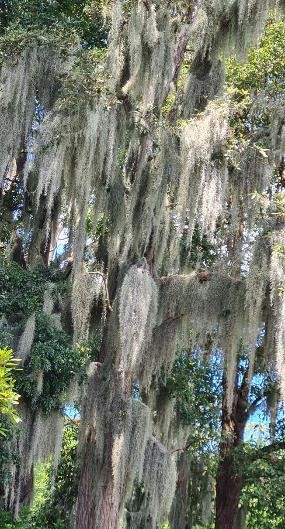Spanish moss
Findings
Spanish moss can grow almost anywhere, but during our survey it was obvious it flourished on some tree species and not others. Our observations indicate that the leachate from the host, or epiphytic species such as lichens and fungi, may be a determining factor for Spanish moss success. Spanish moss was recorded on trees from 32 plant families and 65% of records were from the Myrtaceae (Myrtle) family where turpentine and brush box dominated recordings. Of all the eucalyptus in the northern suburbs only one, red mahogany, was recorded repeatedly carrying substantial amounts of Spanish moss.
Festoons commonly occurred in the middle layer of the support plants (60%) and almost 90% were out of easy reach. Branches were the most common support (56%) followed by leaves, but only 12 host species (26%) were involved, primarily turpentines. Festoons were mostly 0.5 to 2 m long but some extended over 3 m. Sparse infestations were the norm (48%) but most individual festoons were dense.
Dispersal rate appears to have been slow with people and animals the main dispersal agents over long distances, but many observations indicate that the spread, density and size of festoons is increasing exponentially. It is no longer a sleeper weed.

